When making both cold process and melt and pour soap, a spray bottle of 99% Isopropyl Alcohol is helpful. Also known as rubbing alcohol, isopropyl alcohol helps to prevent soda ash on cold process soap, and helps layers stick together when working with melt and pour. It is also helpful to have on hand to clean up messy surfaces after making projects!
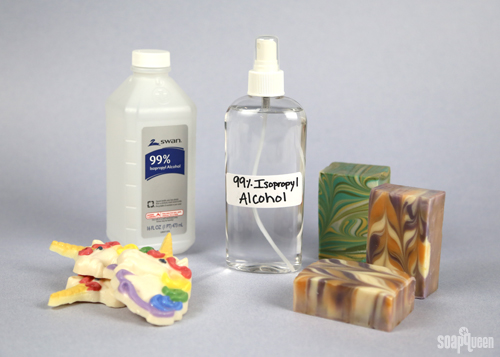 The two most common types of alcohol are isopropyl alcohol and ethyl alcohol. The basic difference between the two is that ethyl alcohol is commonly used for consumption, while isopropyl alcohol is used for topical application. Isopropyl alcohol is not safe for consumption.
The two most common types of alcohol are isopropyl alcohol and ethyl alcohol. The basic difference between the two is that ethyl alcohol is commonly used for consumption, while isopropyl alcohol is used for topical application. Isopropyl alcohol is not safe for consumption.
Isopropyl alcohol (aka: rubbing alcohol) can be found in varying percentages, most commonly from 60%-99%. The percentage refers to the amount of isopropanol (isopropyl alcohol) per volume. The remainder of the formula consists of water. The more diluted rubbing alcohol formulations are commonly used as a mild topical treatment, while the higher concentrations are commonly used for cleaning. When making cold process soap or other projects, 99% isopropyl alcohol is recommended.
 Curious how to incorporate isopropyl alcohol into your soap making? When working with melt and pour, sometimes air bubbles can form. Spraying isopropyl alcohol immediately after pouring breaks up these air bubbles and creates a smooth surface. Spraying isopropyl alcohol in between melt and pour layers also helps the layers adhere. Rubbing alcohol can also be used to disperse oxides and clays to be used in melt and pour projects, like in the Charcoal and Rose Clay Melt and Pour.
Curious how to incorporate isopropyl alcohol into your soap making? When working with melt and pour, sometimes air bubbles can form. Spraying isopropyl alcohol immediately after pouring breaks up these air bubbles and creates a smooth surface. Spraying isopropyl alcohol in between melt and pour layers also helps the layers adhere. Rubbing alcohol can also be used to disperse oxides and clays to be used in melt and pour projects, like in the Charcoal and Rose Clay Melt and Pour.
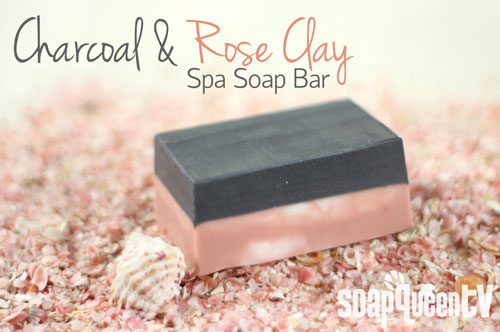 For cold process soap making, isopropyl alcohol is great for helping to prevent soda ash. Soda ash occurs when unsaponified lye reacts with the carbon monoxide in the air. This reaction causes a white film to form on the top of cold process soap. Soda ash is a completely harmless cosmetic issue. Soda ash can be prevented by spraying the top of cold process soap with isopropyl alcohol within 10-15 minutes of pouring your fresh soap. If you’d like to learn more about soda ash and how to prevent it, check out this blog post.
For cold process soap making, isopropyl alcohol is great for helping to prevent soda ash. Soda ash occurs when unsaponified lye reacts with the carbon monoxide in the air. This reaction causes a white film to form on the top of cold process soap. Soda ash is a completely harmless cosmetic issue. Soda ash can be prevented by spraying the top of cold process soap with isopropyl alcohol within 10-15 minutes of pouring your fresh soap. If you’d like to learn more about soda ash and how to prevent it, check out this blog post.
 Ready to put your 99% isopropyl alcohol to use? When you receive isopropyl alcohol from Bramble Berry, it comes in a standard plastic container. We like to pour it into 8 oz. Bottles with a Spray Top for ease of use. Don’t forget to label it!
Ready to put your 99% isopropyl alcohol to use? When you receive isopropyl alcohol from Bramble Berry, it comes in a standard plastic container. We like to pour it into 8 oz. Bottles with a Spray Top for ease of use. Don’t forget to label it!
 Now that your rubbing alcohol is in a spray bottle, let’s get crafting. Below are a collection of melt and pour tutorials in which rubbing alcohol is crucial due to the layers and embeds.
Now that your rubbing alcohol is in a spray bottle, let’s get crafting. Below are a collection of melt and pour tutorials in which rubbing alcohol is crucial due to the layers and embeds.
 Top Row, left to right: Violet Glitter Gradient Melt and Pour, Embedded Heart Melt and Pour Tutorial
Top Row, left to right: Violet Glitter Gradient Melt and Pour, Embedded Heart Melt and Pour Tutorial
Bottom Row, left to right: Rainbow Hearts Melt and Pour, Rainbow Unicorn Melt and Pour
If you are looking for other crafting options, rubbing alcohol plays a key role in creating liquid perfumes and room sprays. It even comes in handy when creating nail polish!
 Top row, left to right: White Ginger and Amber Spray Perfume, Springtime Room Spray
Top row, left to right: White Ginger and Amber Spray Perfume, Springtime Room Spray
Bottom row, left to right: Anti-Pinch Nail Polish, New Year New Fragrance
Do you find isopropyl alcohol essential in your crafting space? What is your favorite way to use it?

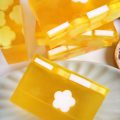
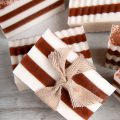
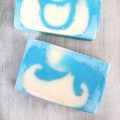
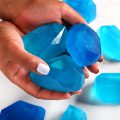
Love your site! Thank you for all the great info!
I have a question about the reaction between rubbing alcohol and liquid soap. I made a beautiful batch of potassium cocoate (my first ever), and I mixed a little with rubbing alcohol to see if I could use it as a cleaner. Instantly I noticed that the liquid soap no longer creates suds. Do you know what the chemical reaction is (if any) and does the lack of suds effect the saponification of the soap so in no longer cleans?
Thanks again 🙂
Hi Wanda!
I’m not entirely sure why that happened! Did you mix the alcohol with the diluted soap, or in the pot while it was cooking?
-Kelsey with Bramble Berry
Love your site wish Bramble Berry would open a location in Canada.
So glad you love the site! Also, thanks so much for your suggestion. We don’t have any plans for a location in Canada at this time. Some of our Canadian customers like to go together on orders. That can help split the shipping costs. 🙂
-Kelsey with Bramble Berry
Hello ! I just made the charcoal and pink clay melted pour soap . it turned out perfect but I tried it the very next day and it smell alcohol a lot !!… … how many days it takes for the alcohol to evaporate. … Thank you !
Hi Evelyne!
That alcohol smell should evaporate! Alcohol evaporates fairly quickly and the smell shouldn’t be present in the final bars. I imagine that will start to disappear in the next couple days. 🙂
Read more about alcohol here: https://www.soapqueen.com/bramble-berry-news/sunday-night-spotlight-99-isopropyl-alcohol/
-Kelsey with Bramble Berry
My question is – if I am using a melt and pour embed in a cold process bar (either through the bar or on top of it) do I need to spritz the embed with rubbing alcohol before I place it in the cold process soap or will the cold process soap adhere around the melt and pour without it? Hope you can help. Thanks, Lizzie.
Hi Lizzie!
You don’t need to spritz the embed with alcohol! It will naturally stick in that cold process soap.
For embeds, we recommend using LCP (Like Cold Process) melt and pour bases. Because they have less glycerin, they have little to not sweating. Regular melt and pour bases can sweat in the soap, which can warp the embeds. It also helps to store the soap in a cool, dry place as it’s curing. If you have a dehumidifier, that helps too. 🙂
LCP Clear Melt and Pour Base: https://www.brambleberry.com/SFIC-LCP-Clear-Melt-And-Pour-Soap-P4383.aspx
LCP White Melt and Pour Base: https://www.brambleberry.com/SFIC-LCP-White-Melt-And-Pour-Soap-P3190.aspx
-Kelsey with Bramble Berry
Hi I just poured a double layer cold process soap and forgot to spray the layers does it matter? Or will it split?
Hi Laura!
Great news – cold process soap doesn’t need alcohol to adhere the layers! Those layers will stick together on their own. 🙂
-Kelsey with Bramble Berry
Would this be true for hot process as well? Would hot process layers stick together on their own?
That is true for hot process soap as well! To make layered designs, split the soap into different containers, add color and layer like normal. 🙂
We did that with the Luck of the Irish Cold Process Soap: https://www.soapqueen.com/bath-and-body-tutorials/cold-process-soap/luck-irish-hot-proces/
-Kelsey with Bramble Berry
Hi! What are the negative effects of 96% isopropyl on cp soap? I know 99% would be best but is 96% usable? Thanks!
Hi Connie!
We’ve had the best and most consistent results with 99% isopropyl alcohol. We’ve found it’s the best percentage for preventing soda ash. 96% isopropyl alcohol should work, but may not prevent soda as as well as 99%. 🙂
99% isopropyl alcohol: https://www.brambleberry.com/Isopropyl-Alcohol-99-16-oz-P5682.aspx
-Kelsey with Bramble Berry
I may have used too much 99% isopropyl alcohol spritzing my melt and pour shave soap. I just could not get rid of the bubbles! The bubbles would dissapate but keep coming back. Anyhow, I finally got rid of the bubbles but now my soap smells like alcohol! Will the isopropyl alcohol eventually evaporate or is this batch trashed?
Sorry I panicked. I placed a small fan blowing on the soap mold and the smell has dissapated from the soap. I would still like to know if all of the alcohol will evaporate. Thanks for your help.
Hi James!
That’s great to hear! 99% isopropyl alcohol can smell strongly at first, but that smell will fade away. Also, the alcohol will evaporate from the soap. 🙂
-Kelsey with Bramble Berry
Isopropyl alcohol is something I always keep on hand- always! I use it to help sanitize my equipment right before using including tools and molds; I use it to spray the top of my soap; and I use it for easy cutting- I wipe my cutter after each use and spray with alcohol between cuts for nice smooth soap.
Thank you for the great article! Brambleberry is the best!
Anna Marie
Hi Anna Marie!
So glad you like this article! We love isopropyl alcohol too, we always have it on hand in our soap lab. 🙂
-Kelsey with Bramble Berry
If you press your mineral make up as I do, I spritz
99% isopropyl alcohol between the layers as I press. It helps to bind the layers in much the same way as in Melt and Pour soap. Being almost pure alcohol, the tiny amount of water flashes off quickly with the alcohol, leaving no moisture(which can cause mold) in your finished product. It’s the only kind to use for this, as others have too much water in the formula.
Hi Beth!
Thanks for sharing your expertise! 🙂
-Kelsey with Bramble Berry